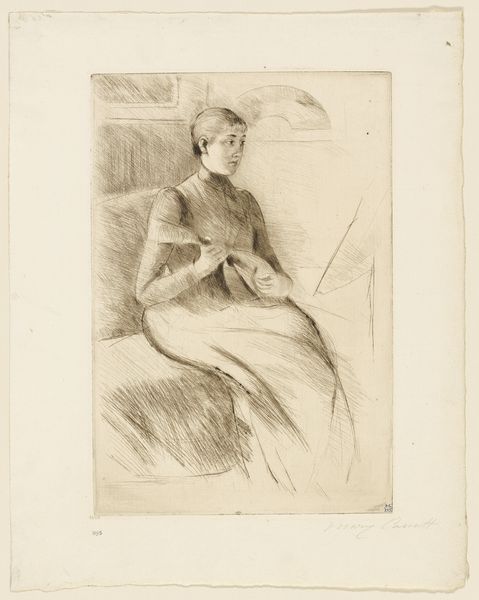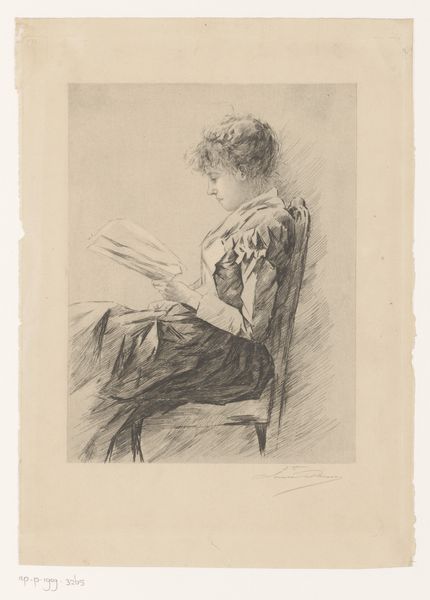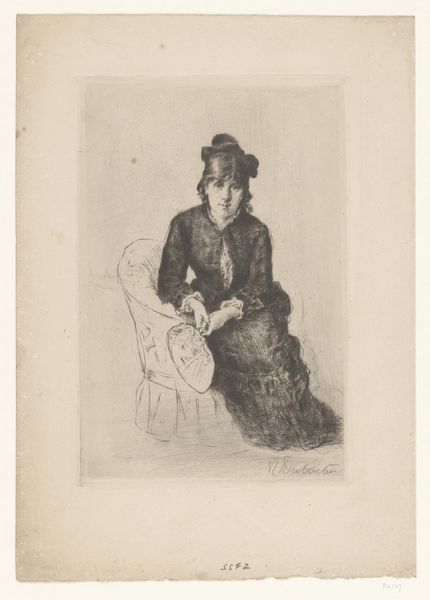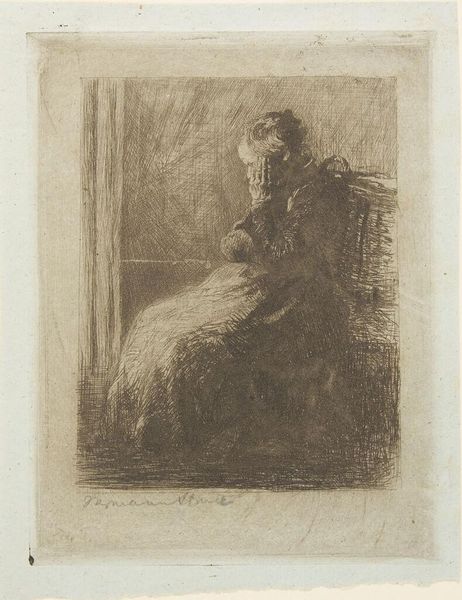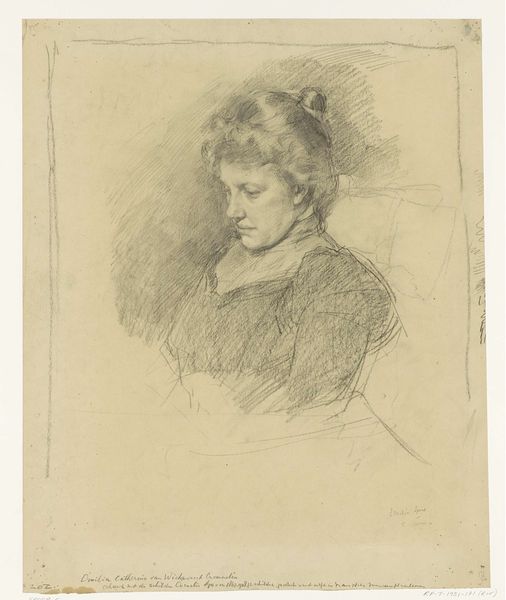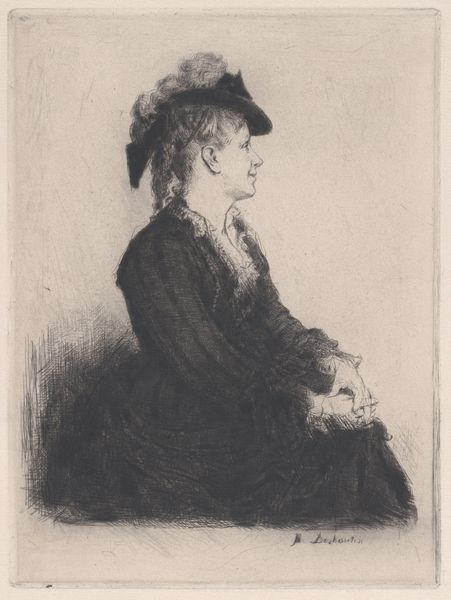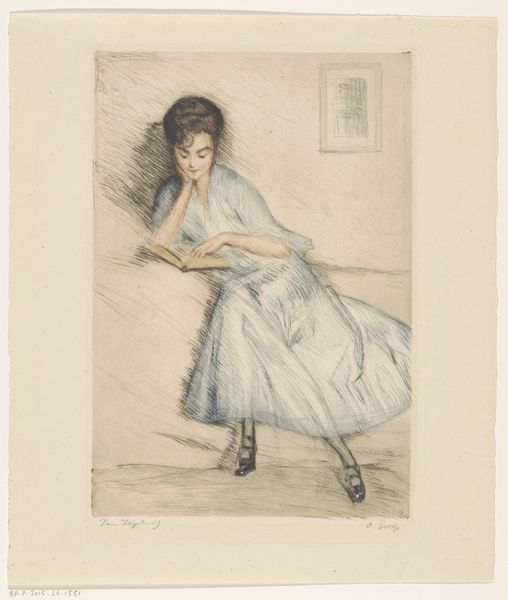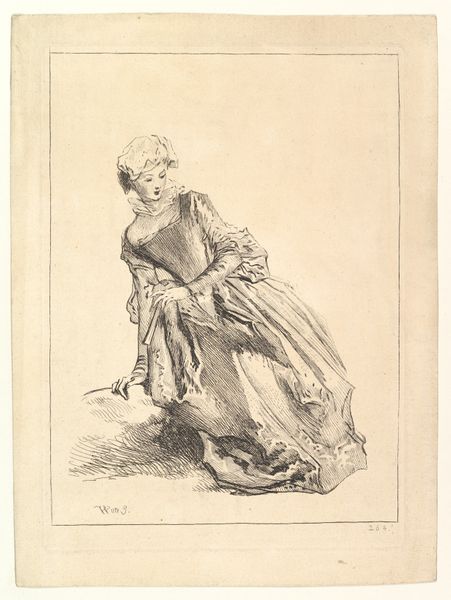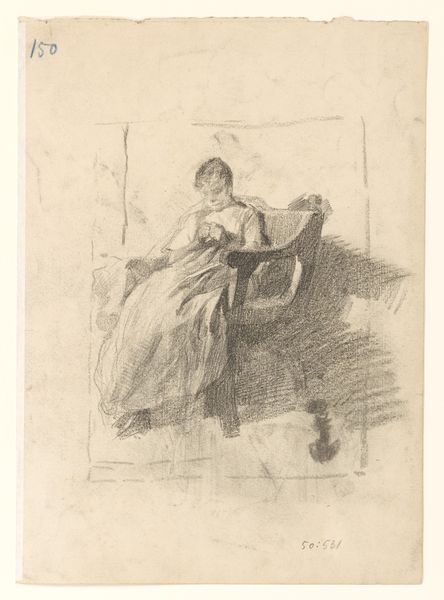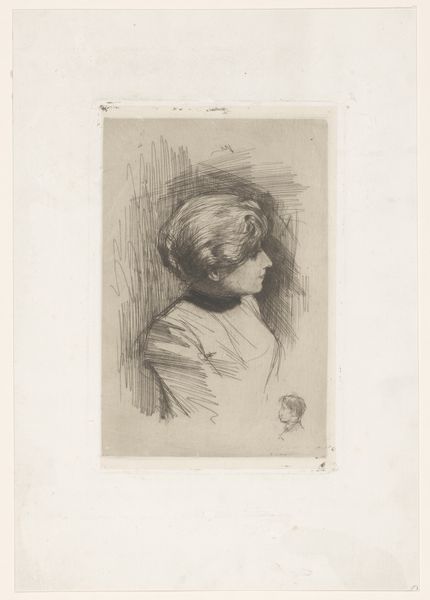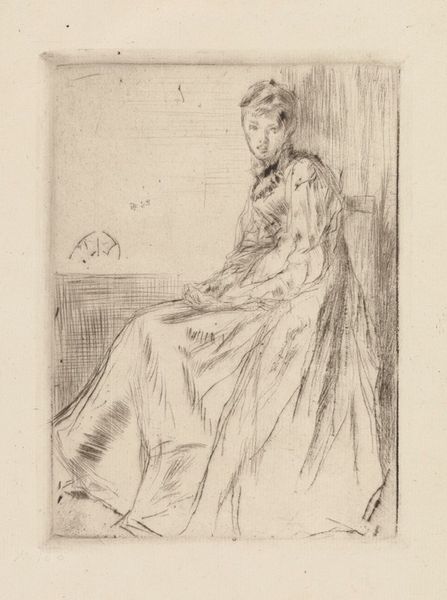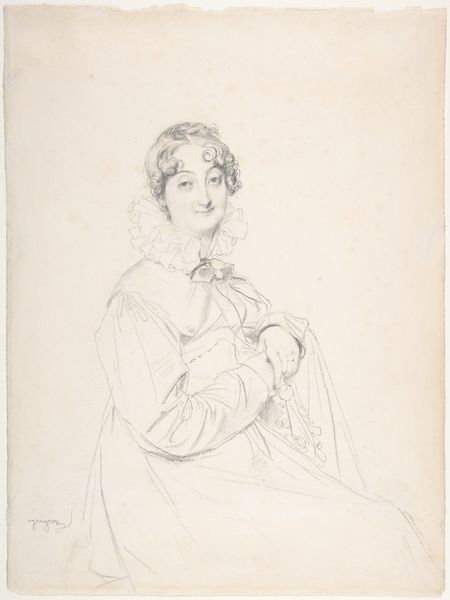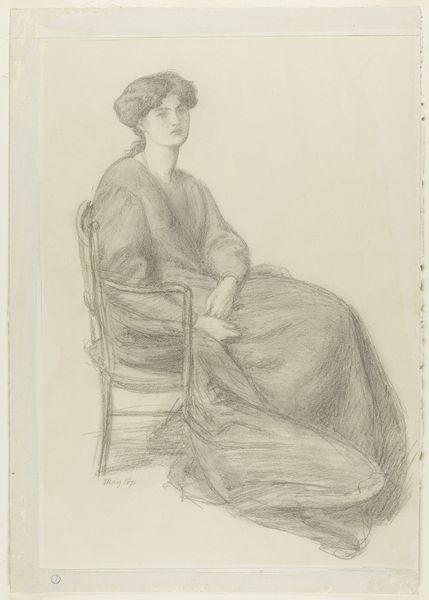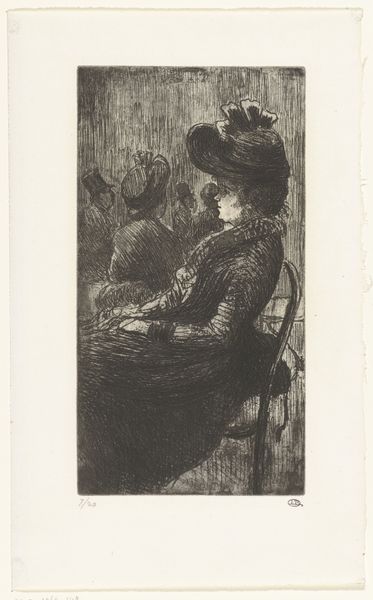
print, etching
#
portrait
# print
#
etching
#
etching
#
pencil drawing
#
japonisme
Dimensions: plate: 21.6 x 28.5 cm (8 1/2 x 11 1/4 in.) sheet: 35.2 x 51 cm (13 7/8 x 20 1/16 in.)
Copyright: National Gallery of Art: CC0 1.0
Giuseppe de Nittis created this print, “The Dancer Holoke-GO-Zen,” using etching, drypoint, and aquatint. It’s fair to suggest that this print, one of many images of Japanese subjects by European artists from this period, reflects the popularity of Japonisme in late 19th-century European art and society. It was a time when many European artists found inspiration in Japanese art and culture, which had become more accessible due to increased trade. The image creates meaning through visual codes associated with exoticism and orientalism. What are the politics of imagery at play when a European artist depicts a Japanese dancer? Does the artwork romanticize or misrepresent Japanese culture? To understand the social conditions that shaped this artwork, a historian might research the role of art institutions in promoting Japonisme, the market for Japanese-themed art in Europe, and the cultural exchange between Japan and Europe. Considering social and institutional context helps us to see the meanings of art that might have been missed.
Comments
No comments
Be the first to comment and join the conversation on the ultimate creative platform.
